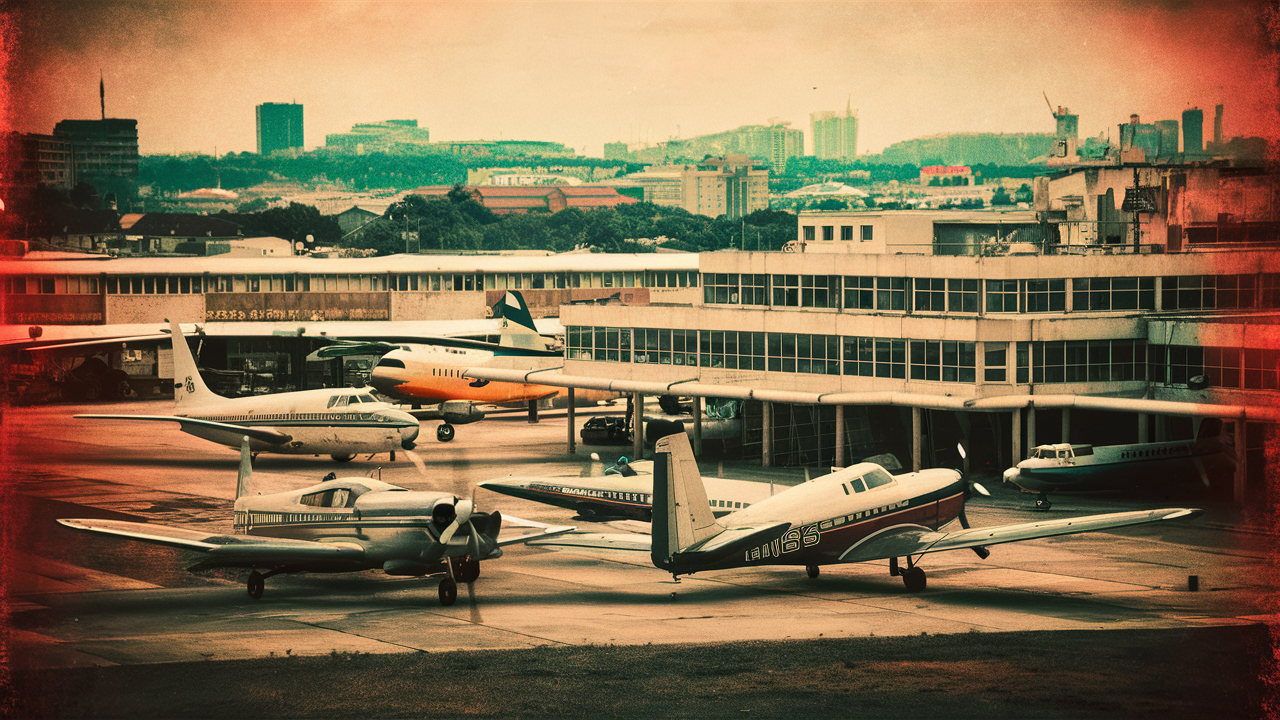Which country has 10,000 airports?

The United States is a country that has approximately 10,000 airports.
It is also incredible that the United States has over ten thousand airports, which makes it the country with the most airports globally. It connects commercial and general aviation for the United States to have the biggest all-purpose airports and the most extensive air transport system in the world.
Who Built the 10,000 Airports and the History About Them
The US has engaged itself in the construction of aviation-related infrastructure since the early twentieth century. Ever since the Wright brothers made their first flight in 1903 in Kitty Hawk, aviation rapidly evolved in the country. Some grass strips and small airports were developed in the 1920s and 1930s for the use of small private airplanes in towns, countryside, and other places.
After the Second World War, a rapid expansion of the US airline industry was witnessed, and several airlines were providing commercial flights between cities. Airline infrastructure to support the growth was built at a very fast pace. Some minor modifications were also made in the airports to include larger aircraft and accommodate higher passenger throughput. Other than the large airline central cities, new forms of airports provided air travel to the secondary cities.
On the same note, private and business aviation grew tremendously, paving the way for thousands of new small general aviation airports in the country. However, unlike other developed countries, aviation in the United States has not been dominated by the large hub airports but instead has developed a vast network of smaller airports.
Types of Airports in the 10,000 Total Context:
Within the over 10,000 airports in the US, there is great diversity, from tiny grass strips to mega-hub airports: Within over 10,000 airports in the US, there is great diversity from tiny grass strips to mega-hub airports:
- Major commercial airports: It is noteworthy that the US has more than 500 primary commercial airports that accommodate the overwhelming number of passengers and cargo shipments by airlines. These are airports where the major carrier has some sort of scheduled service with considerable parking space for airplanes, maintenance facilities, and other amenities for passengers.
- Regional and municipal airports: About 2800 small business and city airports exist where commercial transportation is available, but usually on small regional airline aircraft and for short distances. These airports also have some level of facilities to cater for refueling, maintenance, and passengers and cargo.
- The other more than 10,000 airports are General Aviation ones. These cover private propeller and jet aircraft, business jets, helicopters, and other non-airline-related aircraft. It may include even professionally constructed asphalted ones with ramps, maintenance depots, and fueling stations for both locals and visiting aircraft, as well as just grassy strips.
Geographic Distribution
While many countries focus aviation on a few major hub cities, the US air transportation infrastructure is widely distributed. While many countries focus aviation on a few major hub cities, the US air transportation infrastructure is widely distributed:
- As shown in the table above, most states have between 20 and 200 public-use airports, except Hawaii, which has only 15 airports.
- The top 5 states by number of airports: The top five states with the highest divorce rates are Alaska, 1,573, California, 942, Wisconsin, 847, Ohio, 824, and Pennsylvania, 739.
- Smaller counties can have anywhere from 35 airports, while some metropolitan areas contain well over thirty. For instance, Los Angeles County has nearly 40 airports that are for public use and others that are for private use.
Such geographic spread enables nearly all regions of the country easy access to aviation services. A large number of airports have proven effective in shaping the growth of aviation across a vast stretch of land in the United States. It has brought into union local populations and businesses to regional and national aviation systems of transport.
Transportation in the future of US airports
Even though the flight frequency has gone down due to the mergers, general aviation and business flights still explore the many airport options available. The improvement of the airport facility continues in 2021; more than $17 billion was approved for 2,000 airport projects across the United States under the infrastructure plan. In addition, significant developments are being planned and executed in gateways such as New York, Chicago, and Atlanta.
As the emphasis shifts to regional air transportation, drones, and other types of innovative air vehicles, the United States airport system has growth potential. The 50 state aviation systems of America are prime environments for initial aviation experimentation that will define the forthcoming aviation industry. It can be predicted that the 10,000 mark will be crossed shortly as new vertiports and landing facilities emerge to introduce technological shifts in aviation.
While some of the countries, such as Brazil, Mexico, and Canada, possess more than 500 airports, Australia has approximately 700, while the US has over 10,000 airports. This has been a very important network of infrastructural support that has been instrumental in aviation growth, community connection, and the formation of the massive US aviation system. The current airport system offers the infrastructure to keep advancing the means necessary to define the course of aerial transport.
Call us at (833) 902-2090 to secure the best deals on flight tickets today. Don't miss out on unbeatable prices for your next adventure!
